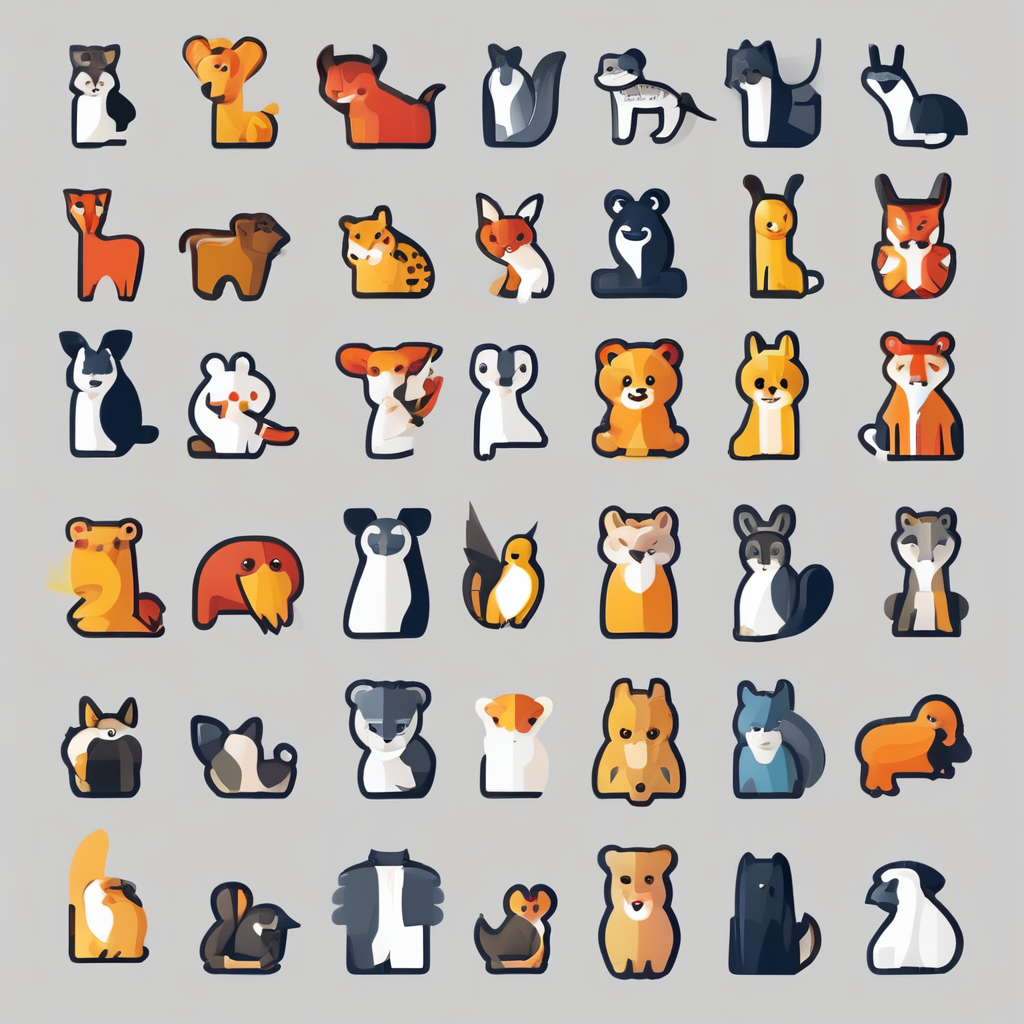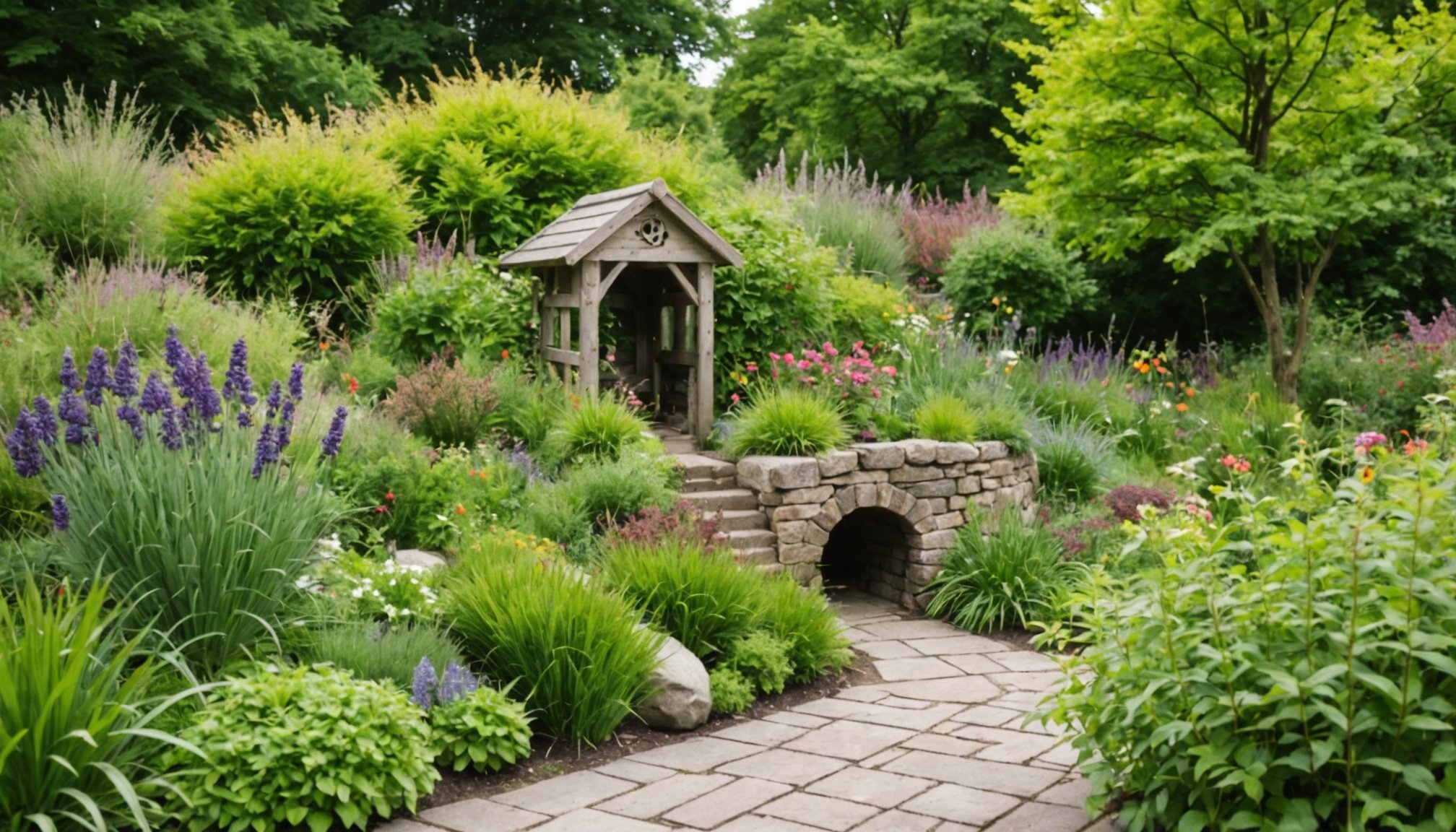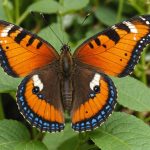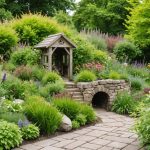Understanding the Importance of Wildlife-Friendly Garden Design
Wildlife-friendly gardens are essential for promoting biodiversity and supporting local ecosystems. They provide crucial habitats for various species, contributing positively to the ecological balance. By integrating wildlife features into garden design, individuals create environments that offer food, shelter, and breeding spaces for different organisms.
Integrating wildlife elements also benefits pets. A rich ecosystem allows pets to engage with their natural surroundings safely. For example, gardens can be designed to safely include hedgehogs or butterflies, which can captivate and enrich a pet’s outdoor experience.
In parallel : Effective techniques for socializing your newly adopted rescue fox: a comprehensive guide
Garden design principles for wildlife include using native plants and ensuring layered vegetation, which offers diverse living and feeding grounds for wildlife. This variety is critical for maintaining healthy ecosystems, as different species play unique roles in ecological functions.
When planning a wildlife-friendly garden, focus on creating a balanced environment that meets the needs of both wildlife and domestic animals. This approach fosters harmony between humans, animals, and nature. Including a mix of plant life, shelter, and water features ensures that gardens fully support the biodiversity they aim to encourage. Emphasising thoughtful design and sustainable practices ultimately leads to healthier and more vibrant outdoor spaces.
Also to discover : Ultimate handbook for successfully raising orphaned british robins: proven techniques for care and nurturement
Choosing the Right Native Plants
Selecting the ideal native plants plays a pivotal role in achieving a thriving wildlife-friendly garden. Native plants are crucial to local ecosystems due to their adaptability and contribution to biodiversity. For your garden, choose plants that attract wildlife yet remain safe and non-toxic for pets.
Consider incorporating a diverse range of native plants that vary in bloom time like lavender and bluebells. This ensures your garden offers resources year-round, enhancing biodiversity with minimal overlap in flowering periods. Summer-flowering plants such as foxgloves are perfect for attracting bees and other pollinators essential to garden health.
Pollinators adore plants like foxgloves and honeysuckle, which also serve as food sources for butterflies and beneficial insects. Garden design principles should prioritize species known for supporting pollinator gardens while providing safe interactions for pets.
Implementing seasonal planting not only bolsters biodiversity but also ensures an ever-changing and rich habitat. Native plants, by their very nature, require less maintenance and contribute positively to the sustainable balance of a wildlife-friendly garden. Proper plant selection forms the backbone of an effective garden design strategy, one that benefits both wildlife visitors and the domestic animals that may share the garden space.
Creating Safe Habitats for Local Wildlife
Designing safe wildlife habitats within your garden is pivotal for fostering biodiversity. By implementing practical garden structures, you can meet the needs of native species while ensuring safety for pets. Key features include birdhouses, which provide refuge and nesting sites. They transform gardens into vibrant ecosystems, attracting diverse bird species that contribute to natural pest control.
Incorporate insect hotels to offer shelter to beneficial insects like bees and ladybugs, which are crucial pollinators and pest managers. Ensure designs use pet-safe materials such as untreated wood or bamboo. These materials prevent harmful substances from affecting wildlife or pets engaging with the habitat. Furthermore, think about installing small mammal homes. These structures support creatures such as hedgehogs and amphibians, aiding in pest control as they naturally regulate insect populations.
Shelter design should consider pet interaction. Ensure habitats are stable and placed in secure garden sections away from frequent pet paths. This attention to detail safeguards both local fauna and domestic animals, allowing seamless coexistence. By prioritising safety and appropriateness in habitat design, you create a holistic garden space meeting the needs of wildlife without compromising pet welfare. This thoughtful integration enhances interaction with nature and promotes a flourishing ecosystem.
Incorporating Water Sources
Integrating water features into your garden is crucial for enhancing biodiversity and supporting local fauna. Water sources serve as vital hydration points for birds, insects, and other creatures, boosting their survival and promoting ecological harmony. Designing a pond or mini bird bath can attract diverse wildlife while providing fresh, clean drinking water. Consider pet-friendly designs by ensuring water features are shallow or have graded edges, preventing mishaps and allowing easy access for all creatures.
Maintaining water cleanliness is essential to prevent the spread of disease among wildlife. Regular checks and cleaning routines ensure the water remains safe, without the necessity for harsh chemicals. A simple way to maintain water purity is by incorporating aquatic plants, which naturally filter the water.
For gardens with limited space, a small fountain or rainwater collection system can be equally effective. These systems offer aesthetic value and essential resources without the need for expansive features. Explore options like self-contained water fountains, which require minimal maintenance and are easy to install. By thoughtfully including water sources in your wildlife garden, you foster a supportive environment that champions both biodiversity and pet safety.
Eco-Friendly Practices for Garden Maintenance
Embracing sustainable gardening techniques can enhance the health of your garden while safeguarding pets and wildlife. Using organic practices, such as avoiding synthetic pesticides and herbicides, not only supports biodiversity but also minimizes the risk of harmful chemical exposure.
Organic pesticides can be derived from natural ingredients like neem oil or insecticidal soap, offering effective pest control without endangering animal health. Herbicides containing vinegar or salt are alternatives to chemicals, effectively managing weeds without toxic residues. Composting is key to enriching soil and promoting robust plant growth in an eco-friendly manner. By recycling garden waste and kitchen scraps, you create nutrient-rich compost, reducing the need for chemical fertilisers.
Soil management is vital. Rotating plant species seasonally and incorporating cover crops can maintain soil fertility, preventing erosion and promoting a balanced ecosystem—beneficial for both flora and fauna. This method not only feeds your plants but also supports the organisms that rely on them.
When managing your garden, consider water conservation by employing drip irrigation systems. This approach efficiently hydrates plants while reducing water waste. Through these environmentally-conscious practices, your garden becomes a sanctuary for pets and wildlife, embodying harmony and sustainability.
Balancing Pet Safety with Ecosystem Needs
Achieving a harmonious garden environment requires a balance between pet safety and supporting local wildlife. Creating spaces that cater to both involves thoughtful garden design, allowing pets to safely explore and interact with their environments without harming or being harmed by the wildlife. Enclosures or natural barriers can separate pet areas from dedicated wildlife sections.
Building a pet-safe garden begins with selecting non-toxic plants and eliminating hazards such as sharp objects or harmful mulch. Incorporating pet-friendly pathways ensures safe navigation, reducing the risk of accidental damage to wildlife habitats. This approach fosters an ecosystem balance, promoting coexistence.
Moreover, careful monitoring of pet and wildlife interactions is vital. Pets, out of curiosity, may disrupt nests or harm beneficial insects. Supervised exploration can be encouraged to protect delicate ecosystems while satisfying pet curiosity. Pet owners can also install motion-activated deterrents to prevent over-exploration into sensitive areas.
To maintain this balance, consider fencing options that allow smaller creatures to pass freely while keeping pets restricted to designated areas. With these strategies in place, gardens develop into sanctuaries for both wildlife and pets, promoting a genuinely enriching experience for everyone involved.
Inspirational Case Studies of Successful Gardens
Exploring garden examples from the UK provides insightful lessons on creating wildlife-friendly spaces. These case studies highlight best practices and creative approaches that have fostered biodiversity and harmony between wildlife and pets.
One notable example is the Chelsea Physic Garden in London, known for its thriving plant diversity and strategic design. By integrating layered vegetation and seasonal blooms, this garden supports a wide range of local wildlife while offering a safe environment for visitors and pets. The strategic use of native plants not only enhances biodiversity but also requires minimal maintenance, exemplifying practical garden design principles.
In another inspiring case, a private garden in Cornwall showcases an array of pollinator-friendly plants like lavender and foxgloves, attracting bees and butterflies throughout the seasons. It demonstrates the effective use of pet-safe garden structures, such as sturdy insect hotels and sheltered nesting areas, promoting a balanced ecosystem.
These case studies serve as templates for gardeners seeking to incorporate sustainable practices, alongside creative designs, to benefit local wildlife. By adapting these successful elements to personal garden spaces, individuals can achieve a harmonious balance between ecological health and pet safety, creating vibrant and thriving gardens that enrich both humans and nature.









